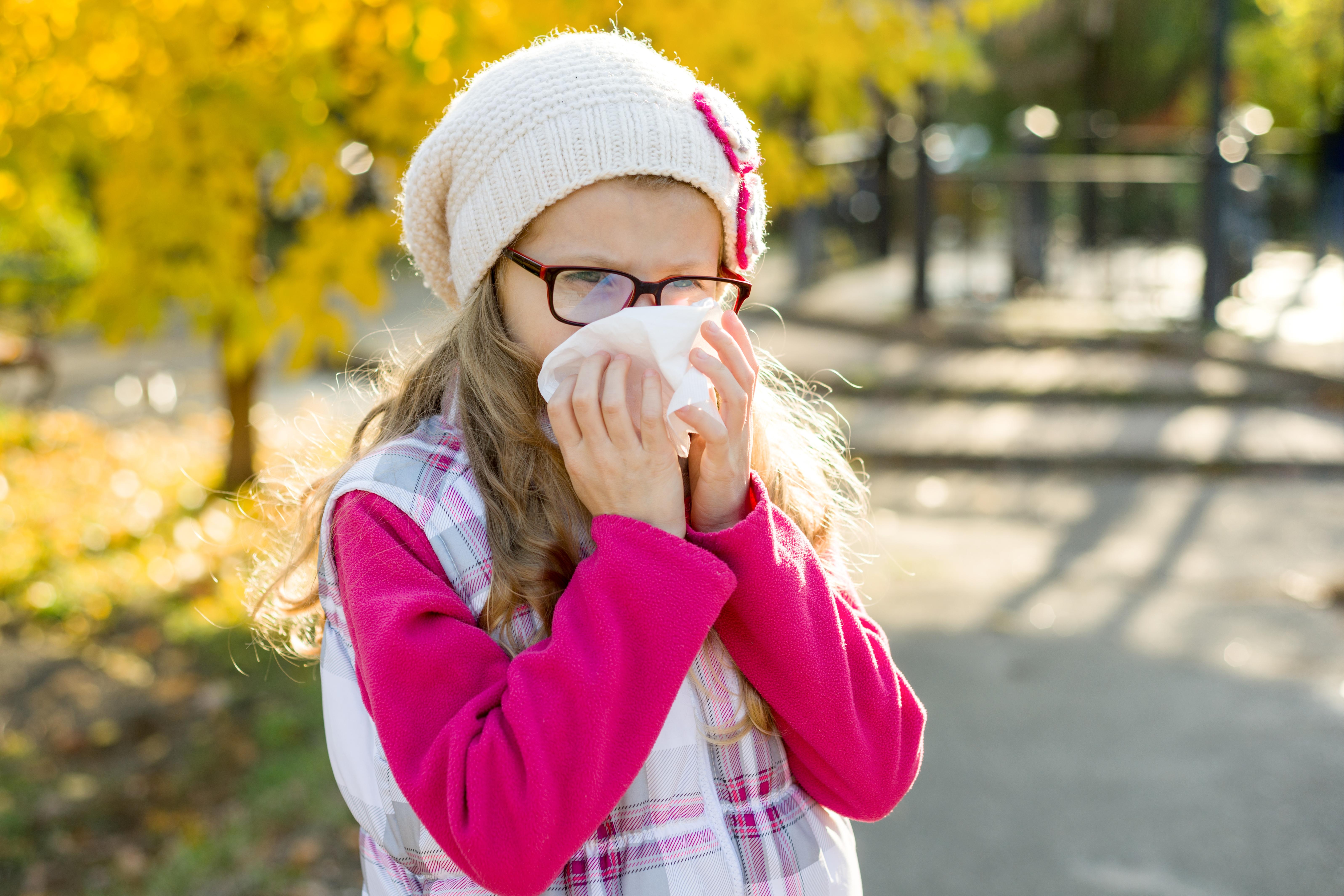Top 10 Childhood Illnesses Every Parent Needs to Know
Childhood is a time of exploration, growth, and boundless energy. However, it can also be a period fraught with various health challenges. Understanding these common illnesses is crucial for parents and caregivers in ensuring the well-being of their children. This article delves into the top 10 most common childhood illnesses, providing parents with vital information to help navigate the complexities of childhood health. Children, with their developing immune systems, are particularly susceptible to a variety of illnesses. These range from mild, self-limiting conditions to more serious diseases requiring medical intervention. The interconnected nature of these illnesses can often make it challenging for parents to discern one from another. By unraveling this intricate web, we aim to equip parents with the knowledge to identify symptoms early, seek appropriate medical care, and implement preventive measures.
1. The Ubiquity of the Common Cold

The common cold is perhaps the most pervasive illness affecting children. Characterized by a runny nose, cough, and sore throat, it is caused by a variety of viruses, with rhinoviruses being the most common culprits. Children, especially those in school or daycare, are highly susceptible due to their close contact with peers and still-developing immune systems. While generally mild, colds can lead to complications such as ear infections or sinusitis if not managed properly. Understanding the transmission of the common cold is crucial for prevention. The virus spreads through droplets in the air or by touching contaminated surfaces and then touching the face. Encouraging children to wash their hands frequently and teaching them to cover their mouths when coughing or sneezing can significantly reduce the spread. While there is no cure for the common cold, supportive care such as rest, hydration, and over-the-counter medications can alleviate symptoms and aid recovery.
2. Navigating the World of Ear Infections

Ear infections are another prevalent ailment in young children, often following a cold. These infections occur when bacteria or viruses invade the middle ear, leading to inflammation and fluid buildup. Symptoms include ear pain, irritability, and sometimes fever. Young children may tug at their ears or have difficulty sleeping due to discomfort. While some ear infections resolve on their own, others may require antibiotics to prevent complications such as hearing loss. Parents should be aware of the signs of an ear infection and seek medical advice if symptoms persist or worsen. Preventive measures include ensuring children receive recommended vaccinations and managing allergies that can contribute to ear infections. Understanding the link between colds and ear infections can help parents take proactive steps to reduce their child's risk, such as using decongestants during colds and avoiding exposure to secondhand smoke, which can exacerbate symptoms.
3. Understanding and Managing Asthma

Asthma is a chronic respiratory condition that affects millions of children worldwide. It is characterized by recurrent episodes of wheezing, coughing, shortness of breath, and chest tightness. These symptoms are caused by inflammation and narrowing of the airways, which can be triggered by allergens, exercise, cold air, or respiratory infections. Asthma can significantly impact a child's quality of life, affecting their ability to participate in physical activities and leading to missed school days. Effective asthma management involves identifying and avoiding triggers, using prescribed medications such as inhalers, and monitoring symptoms to prevent severe attacks. Education is key, and parents should work closely with healthcare providers to develop an asthma action plan tailored to their child's needs. Regular follow-ups can help adjust treatment as necessary and ensure optimal control of the condition. With proper management, children with asthma can lead active, healthy lives.
4. The Persistent Challenge of Allergies

Allergies are a common concern for many children, with symptoms ranging from mild sneezing and itching to severe reactions such as anaphylaxis. Allergies occur when the immune system overreacts to normally harmless substances like pollen, dust mites, or certain foods. Identifying the specific allergens responsible for a child's symptoms is crucial for effective management and prevention of reactions. Parents should be vigilant in observing their child's symptoms and potential triggers. Allergy testing can help pinpoint specific allergens, allowing for targeted avoidance strategies. In some cases, medications such as antihistamines or nasal sprays may be necessary to control symptoms. For food allergies, strict avoidance of the allergen is essential, and parents should be prepared to manage accidental exposures with emergency medications like epinephrine. Education and communication with caregivers and schools are vital to ensuring a safe environment for children with allergies.
5. The Often Overlooked Stomach Flu

Gastroenteritis, commonly known as the stomach flu, is an inflammation of the stomach and intestines that can cause vomiting, diarrhea, and abdominal pain. It is often caused by viruses such as norovirus or rotavirus, but can also result from bacterial infections. The illness is highly contagious, spreading through contaminated food, water, or surfaces, and can lead to dehydration, especially in young children. Parents should focus on keeping their child hydrated, offering small sips of fluids like oral rehydration solutions. While most cases resolve without medical intervention, severe dehydration may require hospitalization for intravenous fluids. Good hygiene practices, such as handwashing and proper food handling, are essential preventive measures. Vaccination against rotavirus can also significantly reduce the incidence and severity of gastroenteritis in infants and young children.
6. Decoding the Mystery of Hand, Foot, and Mouth Disease

Hand, foot, and mouth disease (HFMD) is a viral infection that primarily affects young children. It is characterized by fever, sore throat, and a rash with blisters on the hands, feet, and mouth. Caused by coxsackieviruses, HFMD is highly contagious, spreading through respiratory droplets, direct contact, or contaminated surfaces. While generally mild, the disease can cause discomfort and lead to complications such as dehydration if mouth sores make eating and drinking difficult. Management of HFMD focuses on symptom relief, with parents encouraged to offer plenty of fluids and soothing foods. Pain relievers and topical treatments can help alleviate discomfort from mouth sores. Preventive measures include good hygiene practices and keeping infected children home from school or daycare until they are no longer contagious. Understanding the nature of HFMD can help parents manage the illness effectively and reduce the risk of transmission to others.
7. The Rising Concern of Childhood Obesity

Childhood obesity is a growing concern worldwide, with significant implications for a child's physical and emotional health. It increases the risk of developing chronic conditions such as diabetes, hypertension, and cardiovascular disease. Obesity is often the result of a combination of genetic, behavioral, and environmental factors, including poor diet, lack of physical activity, and sedentary lifestyles. Addressing childhood obesity requires a multifaceted approach involving the child, family, and community. Parents can play a pivotal role by promoting healthy eating habits, encouraging regular physical activity, and limiting screen time. Schools and communities can support these efforts by providing access to nutritious meals and safe spaces for exercise. Education and awareness are crucial in fostering a supportive environment for children to achieve and maintain a healthy weight, ultimately improving their overall well-being.
8. The Enigma of Pediatric Diabetes

Diabetes in children, particularly type 1 diabetes, presents unique challenges for families. It is an autoimmune condition where the pancreas produces little or no insulin, requiring lifelong management. Symptoms include increased thirst, frequent urination, and unexplained weight loss. Early diagnosis and treatment are crucial to prevent complications and ensure a good quality of life for affected children. Managing diabetes involves regular blood sugar monitoring, insulin administration, and a balanced diet. Parents must work closely with healthcare providers to develop an individualized care plan and educate themselves and their child about the condition. Support from schools and communities is also essential in providing a safe and inclusive environment for children with diabetes. With proper management and support, children with diabetes can lead fulfilling lives and achieve their full potential.
9. The Impact of Mental Health Disorders

Mental health disorders, such as anxiety, depression, and ADHD, are increasingly recognized as significant concerns in childhood. These conditions can affect a child's behavior, academic performance, and social interactions, often persisting into adulthood if not addressed. Early identification and intervention are key to helping children manage their symptoms and improve their quality of life. Parents should be attentive to changes in their child's behavior or mood and seek professional help if concerns arise. Treatment may involve therapy, medication, or a combination of both, tailored to the child's specific needs. Schools and communities play a vital role in providing support and resources for children with mental health disorders. By fostering a nurturing and understanding environment, parents and caregivers can help children develop resilience and coping skills to navigate life's challenges.
10. The Hidden Risks of Sleep Disorders in Children

Sleep disorders in children often go unnoticed but can have a profound impact on their overall health, behavior, and academic performance. Conditions like sleep apnea, insomnia, and restless leg syndrome can lead to chronic fatigue, irritability, difficulty concentrating, and even developmental delays. While occasional restless nights are normal, persistent sleep disturbances may indicate an underlying medical condition that requires attention. Obstructive sleep apnea, for example, is more common in children than many realize, often caused by enlarged tonsils or adenoids. If untreated, it can lead to cognitive impairments, behavioral issues, and an increased risk of cardiovascular problems later in life. Insomnia, often linked to anxiety or excessive screen time, can disrupt a child’s natural sleep-wake cycle, affecting their mood and ability to learn.
Empowering Parents Through Knowledge

Navigating the web of childhood illnesses can be daunting for parents, but knowledge is a powerful tool. By understanding the common illnesses that affect children, parents can make informed decisions about their child's health and well-being. This article has explored the top 10 most common childhood illnesses, providing insights into their causes, symptoms, and management strategies. Empowering parents with this information not only helps in addressing immediate health concerns but also in implementing preventive measures to reduce the risk of future illnesses. Collaboration with healthcare providers, schools, and communities is crucial in creating a supportive environment for children to thrive. As parents become more knowledgeable and proactive, they can better advocate for their child's health, ensuring a brighter, healthier future for the next generation.